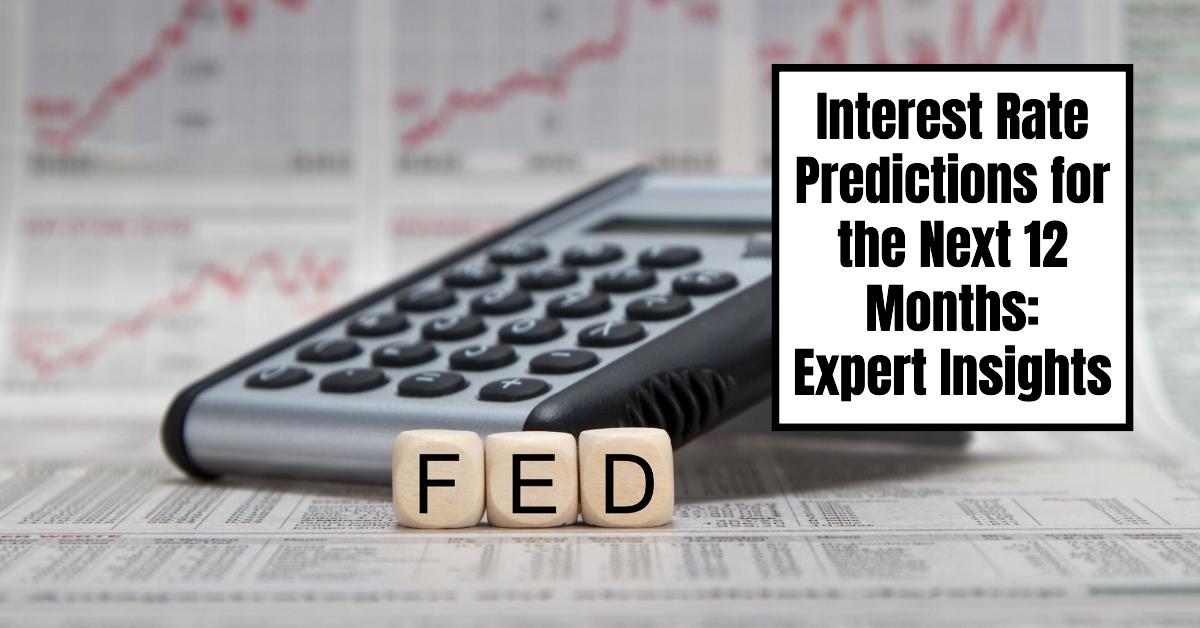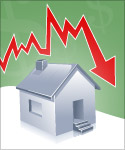As we delve into interest rate predictions for the next 12 months, the landscape may not appear as dire as it once did for borrowers and investors. Based on current economic data and analyses, this period suggests a potential for adjustments, notably a series of anticipated rate cuts that could reshape the borrowing environment.
Interest Rate Predictions Next 12 Months: What to Expect?
Key Takeaways
- Interest Rates Set to Fall: Economists predict gradual interest rate cuts through 2025.
- Inflationary Pressure: Inflation remains a critical factor influencing rate decisions.
- Economic Growth Outlook: Slowing growth could spur the Federal Reserve to ease rates.
- Market Sentiment: Consumer confidence impacts borrowing costs and economic trends.
- Long-term Projections: 30-year fixed mortgage rates may not dip below 6% until 2025.
The potential for interest rate cuts in the coming year is stimulated by various economic indicators, including inflation trends and consumer spending patterns. As central banks around the world adjust their monetary policies, influenced by these indicators, the United States Federal Reserve's actions will be closely watched. The Federal Reserve raised interest rates several times in the past two years to combat rising inflation, but signs are emerging that a more accommodating monetary policy could be on the horizon.
Current Economic Context
In August 2024, inflation has shown moderate signs of cooling but remains a concern. The Consumer Prices Index (CPI) showed an annual inflation rate of 3.1% in July, reflecting a rise from 2.8% in June, which points to ongoing fluctuations and economic challenges in various sectors (U.S. Bureau of Labor Statistics ).
Moreover, the Federal Reserve's decisions to adjust interest rates directly influence mortgage and lending rates. Currently, mortgage rates hover around 6.86% for a 30-year fixed loan, suggesting persistent tension in the housing market amid fluctuating economic conditions (Bankrate ). As we approach the new fiscal year, slowing job growth and softening consumer spending could lead the Fed to reconsider its prioritization of curbing inflation over fostering economic growth.
Expectations for Interest Rate Cuts
Forecasts indicate that the Federal Reserve may cut interest rates three times in 2024, with the first anticipated cut possibly occurring in early 2025 (Forbes ). These cuts are essential for providing relief to borrowers who have been grappling with rising costs. Nevertheless, the timing and extent of these cuts will hinge on economic indicators, including employment rates, inflation, and gross domestic product (GDP) growth.
Analysts suggest a gradual approach to rate cuts, reflecting a cautious stance. The inflation targets set by the Fed are critical benchmarks. The long-term target remains anchored around 2%, but current rates significantly exceed this goal, implying that any shifts in policy will not happen until inflation consistently trends downward.
Impact on Borrowing Costs and Consumer Confidence
Consumer confidence plays a vital role in economic recovery and spending habits. Currently, there is mixed sentiment, with many consumers fearing persistent inflation, which limits spending capabilities. As the Conference Board indicates, many consumers expect increased interest rates over the next year, reflecting anxiety about the economic climate (Conference Board ).
In terms of mortgage rates, while forecasts hint at gradual declines, many predict that they will remain elevated, with the 30-year fixed-rate potentially not falling below 6% until 2025 (U.S. News & World Report ). Such predictions underline the cautious optimism prevalent in the market.
Monitoring Economic Growth and Federal Reserve Policies
The economy's trajectory directly influences interest rate decisions. Recent reports indicate that economic growth may slow in the latter half of 2024, fueled by high borrowing costs and sluggish consumer spending (Conference Board ). As growth decelerates, the Federal Reserve may be compelled to shift its approach, opting for rate cuts rather than hikes.
The labor market is also a significant point of concern. Although unemployment remains relatively low, slow job growth could accompany interest rate adjustments. The Federal Reserve will likely monitor labor statistics closely, using them as input into their monetary policy decisions.
Where Will Interest Rates Be in 2025?
Looking further into the future, the predictions for interest rates in 2025 suggest a crucial phase for policymakers and borrowers alike. Economic projections indicate that the Federal Reserve could implement multiple rate cuts during 2025, totaling up to four cuts throughout the year (Reuters). This shift aims to stabilize the economic environment as the nation navigates the uncertainties ahead.
Experts predict that by late 2025, mortgage rates might fall to around 6%, based on forecasts from reputable institutions like Fannie Mae and the Mortgage Bankers Association, which estimate rates varying from 5.9% to 6.1% (Miami Herald). This expected decline promises relief for potential homebuyers and existing mortgage holders, particularly those who have faced elevated rates over the past few years.
Several key factors will dictate the trajectory of interest rates in 2025:
- Inflation Trends: The persistence or reduction of inflation will heavily influence rate adjustments. Should inflation remain stubbornly high, the Fed may opt to withhold cuts. Conversely, if inflation shows consistent signs of abating, cuts could be facilitated more swiftly.
- Economic Growth Dynamics: The pace of economic growth as we transition into 2025 will play a significant role. If growth is muted, it is likely that the Fed will act decisively to foster economic stimulation via rate cuts.
- Consumer Behavior: A shift in consumer confidence and spending patterns will reflect broader economic conditions and may prompt quicker shifts in interest rate policies.
- Global Economic Environment: External factors—including international market trends and geopolitical developments—will also affect the U.S. economy. Changes in monetary policy by other central banks could impact capital flows and ultimately influence U.S. interest rates.
Conclusion: Framing Future Expectations
In summary, interest rate predictions for the next 12 months suggest a cautiously optimistic scenario with challenges. The expectation of potential rate cuts reflects an understanding that maintaining economic stability will require accommodative measures. Such shifts may provide the financial ease needed for consumers and businesses navigating today’s economic landscape.
The outlook towards 2025 emphasizes a more favorable borrowing environment, driven by strategic rate cuts aimed at promoting economic growth while managing inflation. Borrowers and investors should remain vigilant as they track economic indicators and Federal Reserve decisions, which are poised to shape interest rates and the overall financial landscape in the years to come.
ALSO READ:
- How Low Will Interest Rates Go in 2024?
- Goldman Sachs' 5-Year Housing Forecast from 2024 to 2027
- US Home Price Forecast by Goldman Sachs Shows 5% Surge in 2024
- Interest Rate Predictions for the Next 3 Years: (2024-2026)
- Interest Rate Predictions for Next 2 Years: Expert Forecast
- Interest Rate Predictions for Next 10 Years: Long-Term Outlook
- When is the Next Fed Meeting on Interest Rates in 2024?
- Interest Rate Cuts: Citi vs. JP Morgan – Who is Right on Predictions?
- More Predictions Point Towards Higher for Longer Interest Rates



